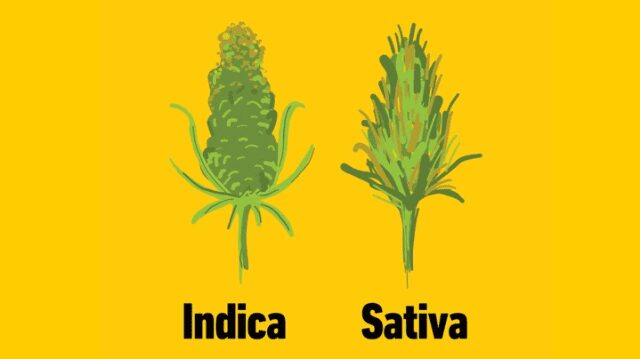What’s the difference between sativa and indica?
Whether it’s your first cannabis purchase or 100th Friday night re-up, there’s always a decision to make: sativa or indica. So, what’s the difference?
The words refer to the two subspecies of the cannabis plant. Cannabis sativa succeeds in warmer areas closer to the equator like East Asia, where it grows tall with narrow, light green leaves. Conversely, the bushier and dark green cannabis indica performs better in the cooler climates of areas like Pakistan and Morocco.
Do sativa and indica strains produce different effects?
Consumers have long been led to understand that the different strains also promise different effects. Sativa strains make for lighter, headier highs best suited for creative bursts during the day. Indica strains provide heavier body highs perfect for locking into the couch at bedtime. Put simply, the two subspecies have been marketed to customers as the yin and yang of cannabis.
However, the distinctions between the strains were created by botanists to discern the cultivation practices and physical traits of the plants – not the effects they yield. While many sativa strains affect the user in what we’ve been taught to believe is a “sativa way,” this common conception is not always reliable in determining the experience you will have with the flower.
The best ways to determine which strain is best for you
To best infer a cannabis product’s effects, you should inspect its cannabinoid and terpene content.
Cannabinoid content refers to the chemical makeup of the specific plant—namely, the ratio of THC to CBD. For example, a strain higher in CBD will be better for stress relief and provide a less intense high. Every cannabis product bought legally should have this information displayed on its packaging for your review.
Terpenes are the aromatic oils that give cannabis its distinct smells and colors. These properties can then clue you in on that strain’s effects. For example, flower that smells more herbal and pine-y usually make for more calming or “indica” highs, whereas citrus and fruity aromas point to more energetic or “sativa” highs. Some like to say “the nose knows” when judging how a strain will affect you. So, take a moment to smell the flowers and learn about how you interact with different strains.
Another way to more reliably choose your cannabis experience is by sticking to hybrid strains. These products are curated for their effects and marketed to consumers accordingly. Due to the deliberate cultivation process, an indica-dominant hybrid is much more likely to yield a heavier body high than a regular indica strain.
Try lots of strains!
Still, one can never be certain how a strain will affect them until they try it. Everyone’s body is different, which is both a blessing and a curse. A curse because it may take a few tries before you find exactly what you want; a blessing because, hey, you get to try a lot of different weed. Head over to our shop page, and we can help you with that!
In short, the sativa and indica distinction of cannabis has less to do with the effects a strain yields and more to do with how a particular plant grows. The classifications can help inform our choice for a specific experience, but learning to determine which terpenes attract us and sticking to hybrids can lead to more consistent, expected outcomes.
